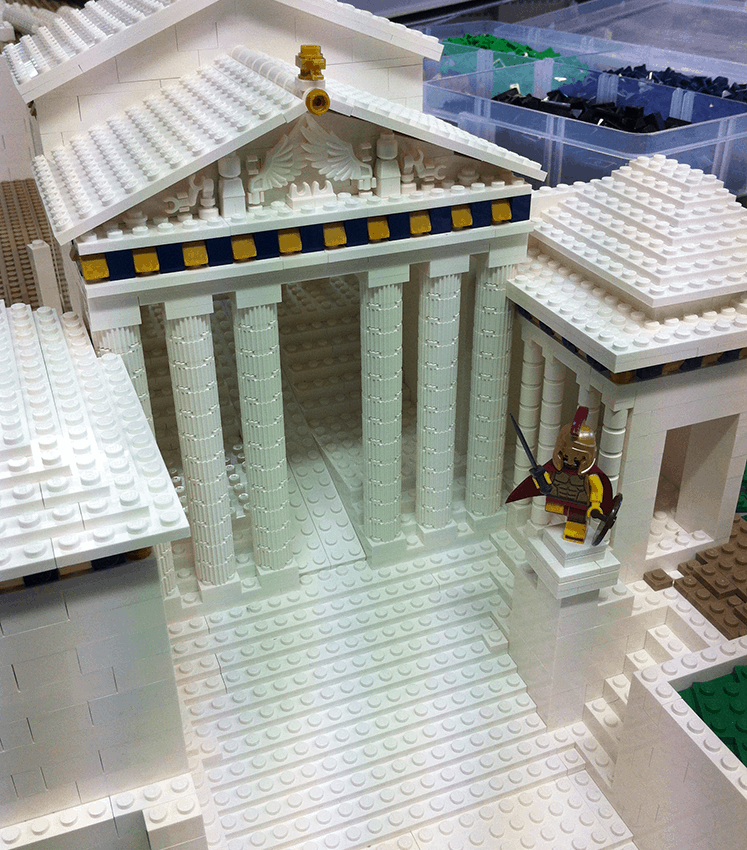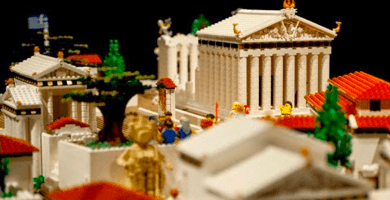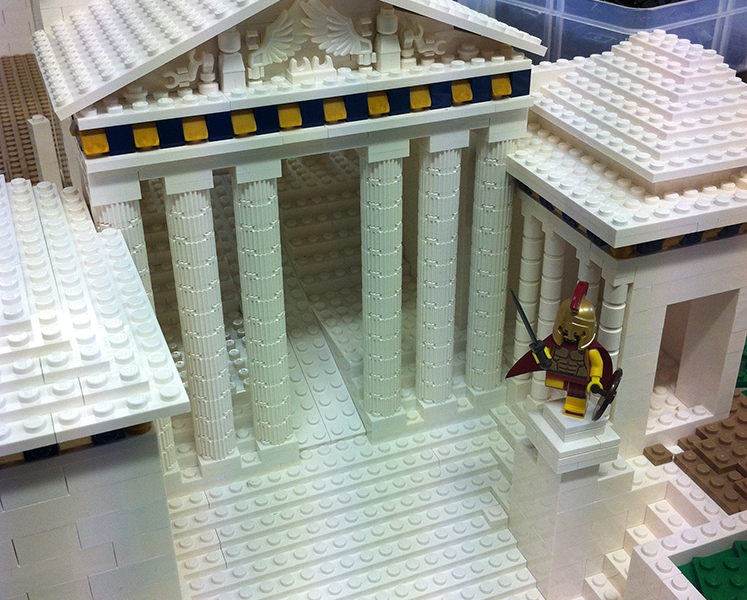A replica of the Parthenon temple and the Acropolis in Athens have been built out of Lego pieces at the Nicholson Museum of the University of Sydney and are now on their way to Greece.
Australia's only certified professional Lego designer Ryan McNaught, also known as “The Brickman”, is the man responsible for creating multiple ancient monument replicas and miniatures out of Lego, including this one of the Acropolis.
The Lego Acropolis is made out of 120,000 Lego bricks and took McNaught approximately 300 hours to build.
“The British Museum may refuse to return the Parthenon sculptures and marbles to Athens, but we will donate an entire Acropolis to the Acropolis Museum,” Michael Turner, curator of the Nicholson Museum at the University of Sydney, said jokingly.

The Acropolis model is as “faithful and similar” as possible to the authentic Acropolis with the Parthenon, the Temple of Athena Nike, the smaller temple of the Erechtheion and the Propylaea gates, among other symbolic monuments also constructed in Lego.
McNaught, in an attempt to present the comicotragic history and “abuse” of the sacred monument and symbol of Greece, created various Lego characters that represent real people and real events that occurred in the past.
For example, starting from the small Conservatory of the Acropolis, Ancient Greek hero Theseus – made of course out of Lego – is seen trying to figure out the exit path of the maze, where the notorious monster, Minotaur, lived (this of course is an event that happened in the island of Crete).
Later, at the theatre of Odeon of Herodes Atticus, British singer Elton John gives a concert for visitors and tourists.
Also, Lego Lord Elgin and his crew are depicted removing the marbles of the Parthenon and taking them away, while the founder of psychoanalysis and psychopathology, Sigmund Freud, in his Lego form, is seen walking around and admiring the ancient monuments of Acropolis, as it happened when he visited Athens in 1904.
The Lego Acropolis has attracted more than 100,000 visitors to the Nicholson Museum in Sydney, while the previous exhibition, the Italian Lego Colosseum, attracted 90,000 visitors in 2012.
When it was first exhibited at the University of Sydney, the Lego Acropolis was displayed in two different versions: as it is today – with certain of its parts ruined or stolen as centuries passed by – and a second version of the Parthenon, as it was in the 5th century BC, the Golden Age of Pericles.
This exhibition of the university was organized in Australia as part of a series of exhibitions that are designed to arouse an interest in antiquity, ancient history and culture in both children and adults alike.
The Nicholson Museum of the University of Sydney was the largest archaeological museum in both Australia and the Southern Hemisphere and housed the biggest collection of antiques, sculptures, and monuments in the country.
Originally established in 1860, the Nicholson Museum showcased pieces of “ancient history” from Greece, Cyprus, Italy, Egypt and other countries.

As of February 2020, it was decided that the iconic Australian museum will close and from November 2020 the Chau Chak Wing Museum, of the University of Sydney, will continue to display all its collections.
Along with this big change, a variety of items, both ancient and modern, will be sent away to different parts of the world permanently or for temporary exhibitions, including the Lego Acropolis, which has been sent to Greece as a gift and sign of respect for the country’s cultural influence.
In 2018, the new Acropolis Museum in Athens reportedly asked the Nicholson Museum, to borrow the Lego Acropolis so that it could be displayed in its halls, closer than ever to the original temple of Parthenon.
The management team of the Australian museum immediately responded in the affirmative, and decided to instead donate the Lego piece to Athens.
“This could only happen in my wildest dreams” said emphatically Michael Turner, the curator of the Australian museum.
“I was up all night when we decided to donate the Lego Acropolis. I could not believe how honourable the request of the Greeks to us was. I informed the Acropolis Museum in Athens that they could not just borrow this exhibition, but we would gift it to them!” he added.
Already the Lego monuments, buildings, sculptures and characters, like Lord Elgin and Sigmund Freud, are on their way to Greece from Sydney, while the Lego Pompeii is being prepared to be showcased in Australia at the University of Sydney.
The Acropolis model is expected to arrive at the Acropolis Museum very soon, and will be presented on the second floor, which houses the restaurant, library and part of the educational programs of the museum.

